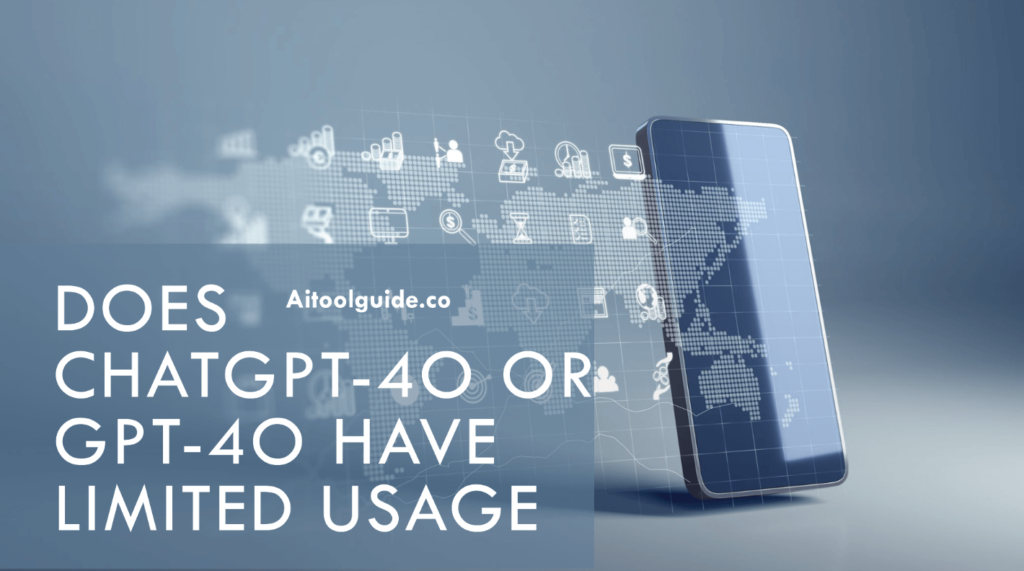Yes, ChatGPT-4o and GPT-4o do have usage limits. For free users, ChatGPT-4o is limited to approximately 10 messages per day, with the limit resetting every five hours.
Plus users have higher limits, with the ability to send up to 80 messages every 3 hours on GPT-4o and 40 messages every 3 hours on GPT-4.
These limits are in place to manage server capacity, ensure fair access for all users, and maintain service quality. During peak hours, these limits may be further reduced to keep the service accessible.
OpenAI has implemented these restrictions to balance the demand for their advanced AI models with the need to provide a stable and reliable service to a large user base.
Usage Limits for Free Users
ChatGPT-4o or GPT-4o do have usage limits for free users. Free users are typically limited to approximately 5-10 messages every 5-6 hours, with the exact number varying based on current usage and demand.
The service automatically switches to the older GPT-3.5 model when this limit is reached.
These restrictions are implemented to manage server capacity, ensure fair access for all users, and maintain service quality.
The limitations help balance the high computational demands of advanced AI models with the need to provide consistent access to a broad user base. Plus users, in contrast, have higher limits, with the ability to send up to 80 messages every 3 hours on GPT-4o.
OpenAI may adjust these limits during peak hours to keep the service accessible to as many people as possible. These measures are part of OpenAI’s strategy to make advanced AI tools available while managing technical and resource constraints effectively.
Usage Limits for Plus Users
ChatGPT Plus users have significantly higher usage limits compared to free users. Plus subscribers can send up to 80 messages every 3 hours on GPT-4o and up to 40 messages every 3 hours on GPT-4. This is substantially more than the free tier, which is limited to approximately 5-10 messages every 5-6 hours.
The exact limit for free users varies based on current usage and demand. OpenAI may reduce these limits during peak hours to keep the service accessible to a wider number of users.
This dynamic adjustment helps manage server capacity and maintain service quality. The 3-hour interval for Plus users allows for more sustained usage throughout the day.
Additionally, subscribers get priority access during high-traffic periods, ensuring more reliable service.
These higher limits and priority access make ChatGPT Plus more suitable for users who rely heavily on AI for work or frequent use, while free users may find their access more restricted, especially during busy times.
Why Do Usage Limits Exist?
Usage limits for ChatGPT-4o and similar AI models exist primarily to manage server capacity and resource allocation effectively.
These advanced language models require significant computational power, and without limits, the system could become overwhelmed, leading to service disruptions or degraded performance.
By implementing usage restrictions, OpenAI can ensure fair access for all users, preventing a small number of heavy users from monopolizing the service.
This approach helps maintain service quality and responsiveness for the entire user base. Additionally, these limits allow OpenAI to balance the high demand for their AI technology with the practical constraints of their infrastructure.
During peak hours, limits may be further reduced to keep the service accessible to as many users as possible. These measures are part of OpenAI’s strategy to provide advanced AI tools to a broad audience while effectively managing technical and resource constraints.
Strategies to Maximize Usage Within Limits
To maximize usage within ChatGPT’s limits, users can employ several strategies. Writing multiple prompts in a single message allows for more efficient use of the available messages, enabling users to cover multiple topics or aspects in one interaction.
Crafting more comprehensive queries helps extract more detailed and nuanced responses, reducing the need for follow-up questions.
When limits are reached, users can switch to alternative AI models or platforms to continue their work. For instance, Microsoft Bing AI chat offers a different set of limits (20 chats per session or 200 messages total per day).
Additionally, users can try spacing out their usage throughout the day, as limits often reset after a certain period. By combining these approaches, users can make the most of their allocated usage while staying within the platform’s restrictions.
Alternatives to ChatGPT-4o/GPT-4o
Several alternatives to ChatGPT-4o/GPT-4o offer unique features and capabilities. Some popular options include Claude from Anthropic, which has a longer context window and focuses on safety and reliability.
Google’s Gemini integrates deeply with Google products and offers internet search capabilities. Meta AI, based on the open-source Llama model, provides a more direct, less tuned output.
For those seeking multiple AI models in one place, Poe offers access to various models including GPT, Claude, and PaLM.
Perplexity is ideal for internet-connected searches with comprehensive source listings. For developers and businesses needing higher usage limits, paid API options are available from OpenAI, Anthropic, and other providers.
These APIs allow for more customization and integration into existing applications, offering greater flexibility and scalability compared to the free web interfaces.
Conclusion
ChatGPT-4o and GPT-4o have usage limits to manage server capacity and ensure fair access for all users. Free users are restricted to approximately 5-10 messages every 5-6 hours, while Plus users can send up to 80 messages every 3 hours on GPT-4o.
These limits help maintain service quality and balance high demand with infrastructure constraints. As AI continues to play a significant role in decision-making processes across various industries, responsible AI usage becomes crucial.
This includes addressing ethical challenges, combating bias and discrimination, ensuring accountability and transparency, protecting privacy and data security, and mitigating economic disruption. By adhering to these principles, we can harness AI’s potential while minimizing potential harm.
- Guide to Connect Claude AI with Google Sheets in 2024 - October 11, 2024
- What is DreamGF? Honest review by Expert - October 9, 2024
- How to Use Claude AI in 2024? - October 7, 2024






